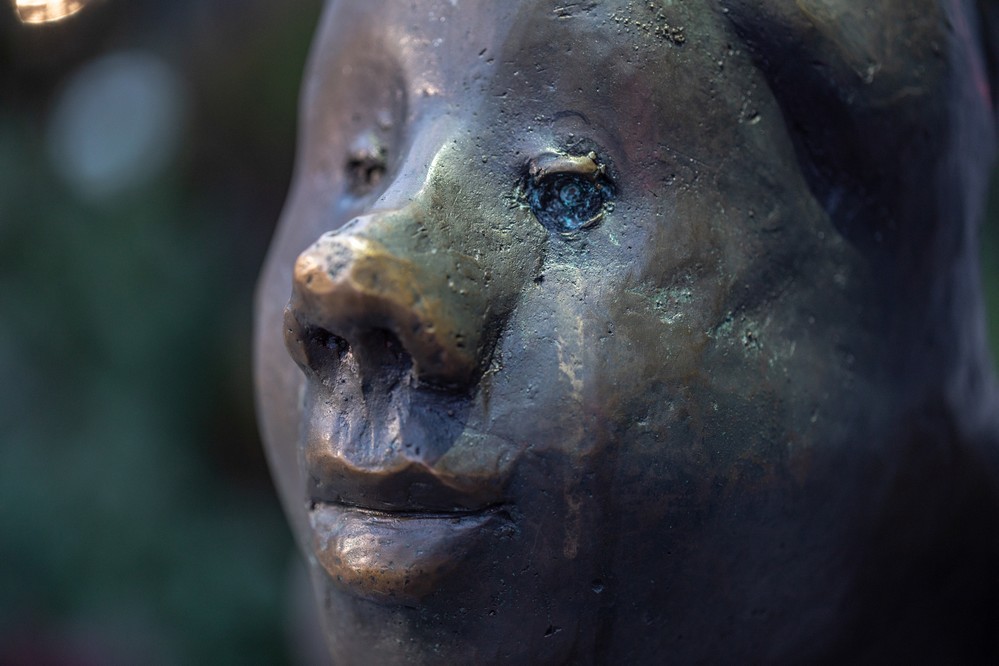Add to bookmark
With much creativity, the artist decided to give this gargoyle the shape of a cannon.
Many people have tried to understand and explain this choice of a cannon.
Does it not simply come from the fact that the architects of St Jean Church, Martin and Jean de Vaulx, were originally the architects of the ramparts and therefore more specialised in military constructions?
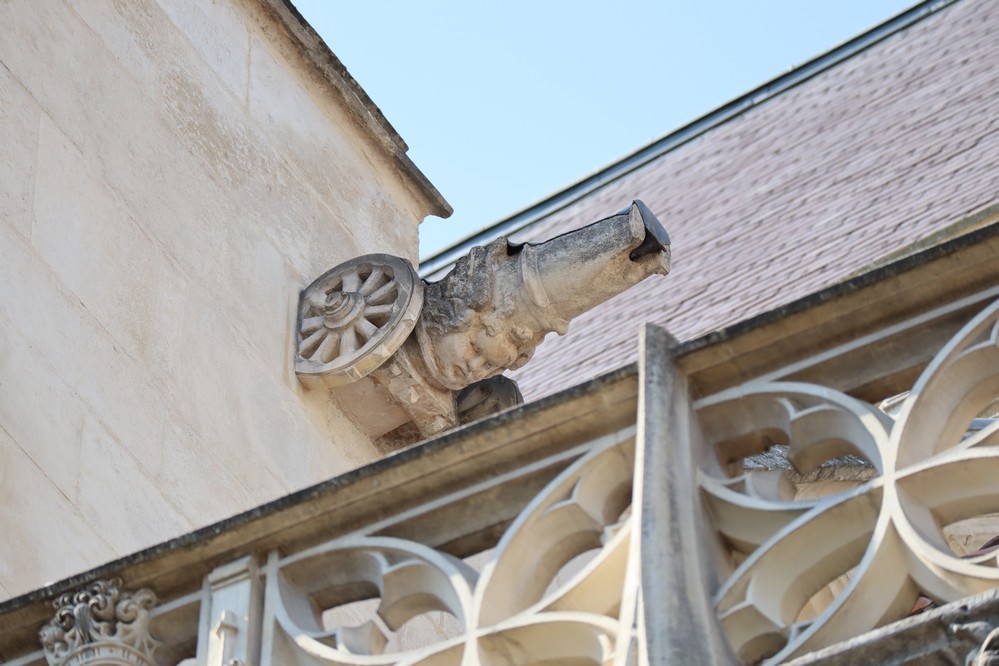
During the Renaissance, new buildings were decorated in a very refined way.
Doors and windows were decorated, corner posts were covered with protective saints and beam ends were sculpted. These could be of many different sorts, representing faces, grotesques, monsters, or even plants…
They form the heritage of the refinement of the 16th century houses in Troyes.
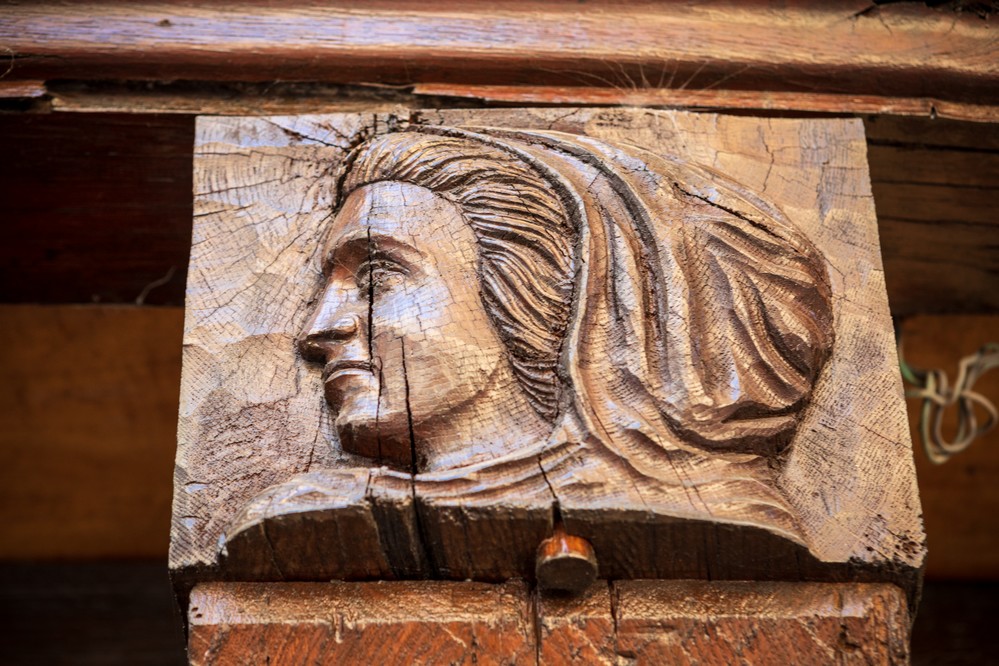
The Mauroy Hotel, also known as De Mauroy, is a fine example of renaissance civil architecture. It was built in the shape of a quadrilateral surrounding a courtyard. The walls are made of Champagne-style brick-laying and chalk, and gargoyles can be observed, two of which are monsters, at the base of the gables.
The sculptor did not hesitate to include male attributes on one of them…
Since 1974, this building has housed the “Maison de l’Outil et de la Pensée Ouvrière” (House of Tools and Workers’ Philosophy), which displays more than 12,000 tools from the various manual guilds from the 17th to the 19th century.
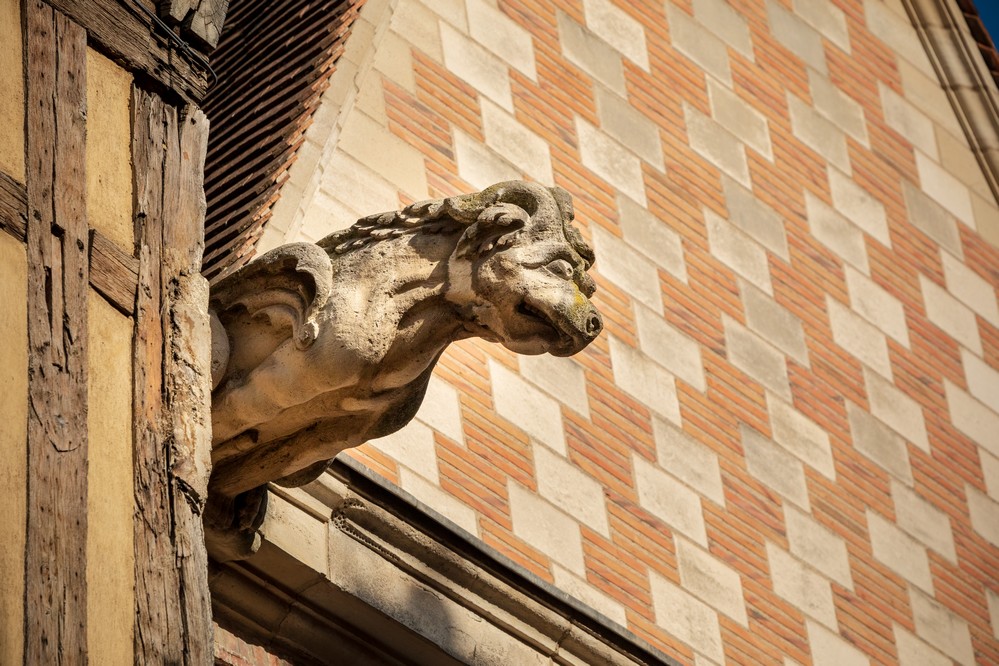
In the middle of the Square Boisseau, mixing mineral, vegetal and water, in the movement of requalification of the historical heart of Troyes, the sculpture-playground, the red polymorph, work of the artists Jean-Marie and Marthe Simonnet, makes children and adults happy. With their big aesthetic works created in their studio, these artists want to integrate their creations into the daily life of the citizens.
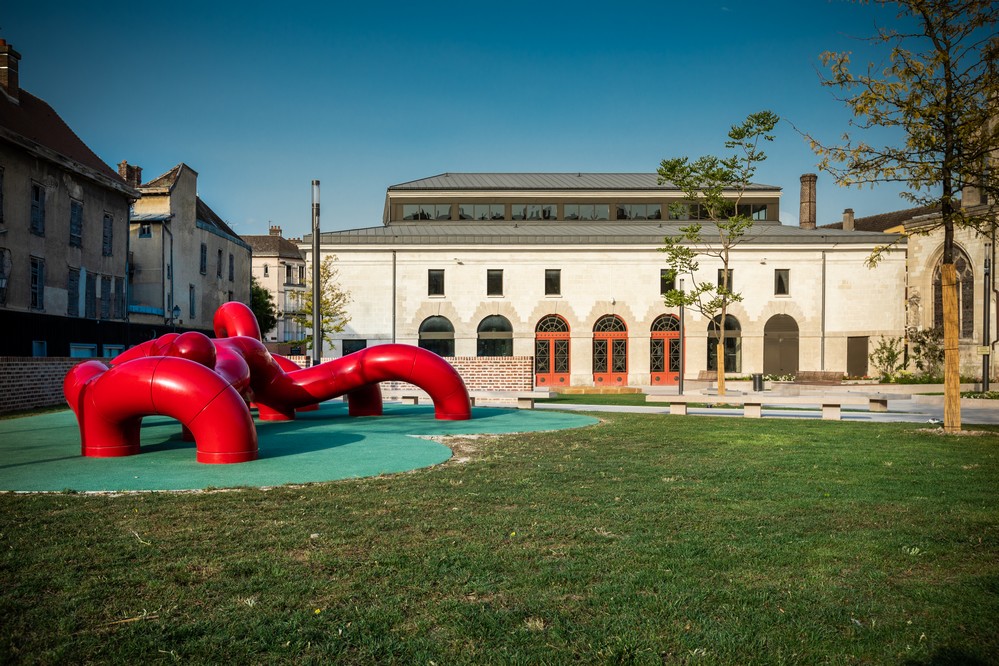
During some restoration work, six medallions with six heads, two of which wearing a crown, were discovered above the first floor windows of a building. They are made of terracotta, with traces of polychromy.
This decoration, inspired by the 16th century Italian art, may have been brought from Italy.
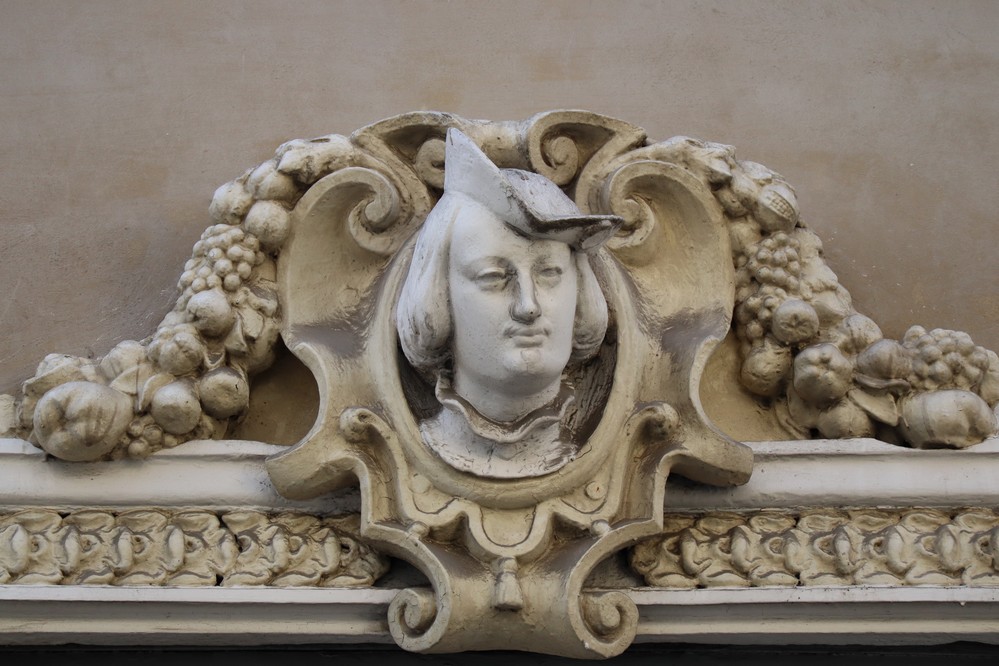
The Argence Fountain is the work of the sculptor Mathurin Moreau. It was installed in 1897 thanks to a bequest from the Mayor Désiré Argence, who wanted a fountain to be installed on the high school square (Place du Lycée). This monumental cast iron work is bronzed in copper and comes from the “Société anonyme des Hauts fourneaux et fonderies” (corporation of furnaces and foundry) of the Val d’Osne (Haute-Marne, France).
The main basin dominates a group of four characters resting on a base. Above, a group of children is crowned by the upper basin, which is itself surmounted by a vase with falling jets. Four mermaids and four swans are placed in the eight corners of the basin and spray some water into the fountain.
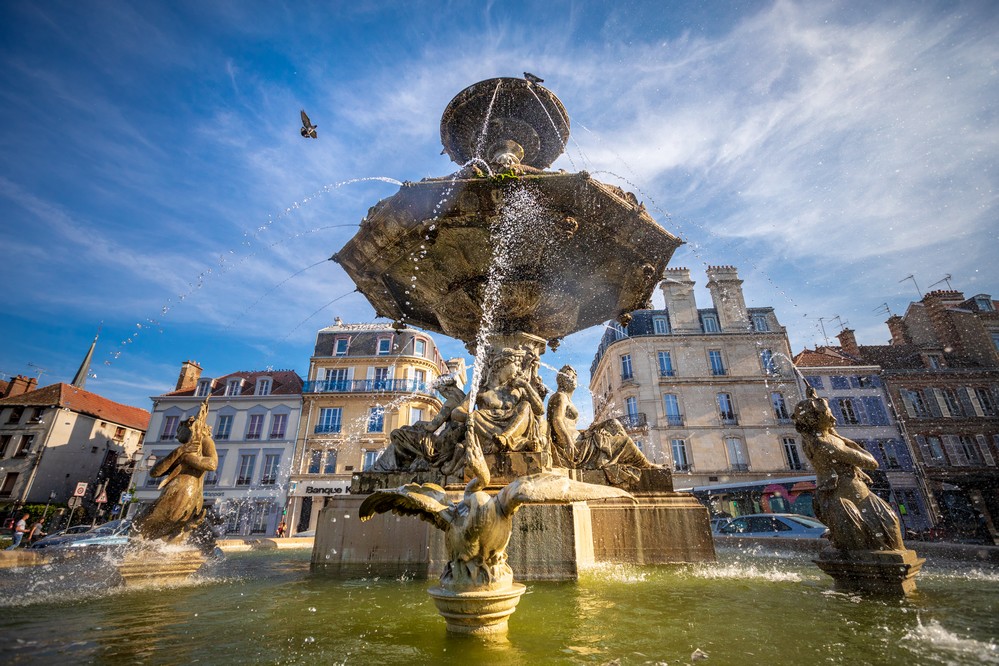
A large glass sculpture is installed on “Place de la Tour”, in a square basin fountain. This 500 kg piece made of glass was a real challenge, with its steel structure supporting 20 glass panels playing with the light and topped by a crystalline spire. With the collaboration of Didier Duchêne, “Compagnon du Devoir” (master artist) and CMD2 metal workshop manager in Estissac, the glass artist Jean-François Lemaire has undoubtedly created the first large-scale urban glass sculpture in France. This work was a request from the City of Troyes, and expresses several subjects using the language of contemporary art. These themes that the City and the artist agreed to develop from spring 2018 are about history, water and the colour blue. It is also a tribute to the painter Claude Monet, who so often painted the reflections of light on rivers, ponds and streams.
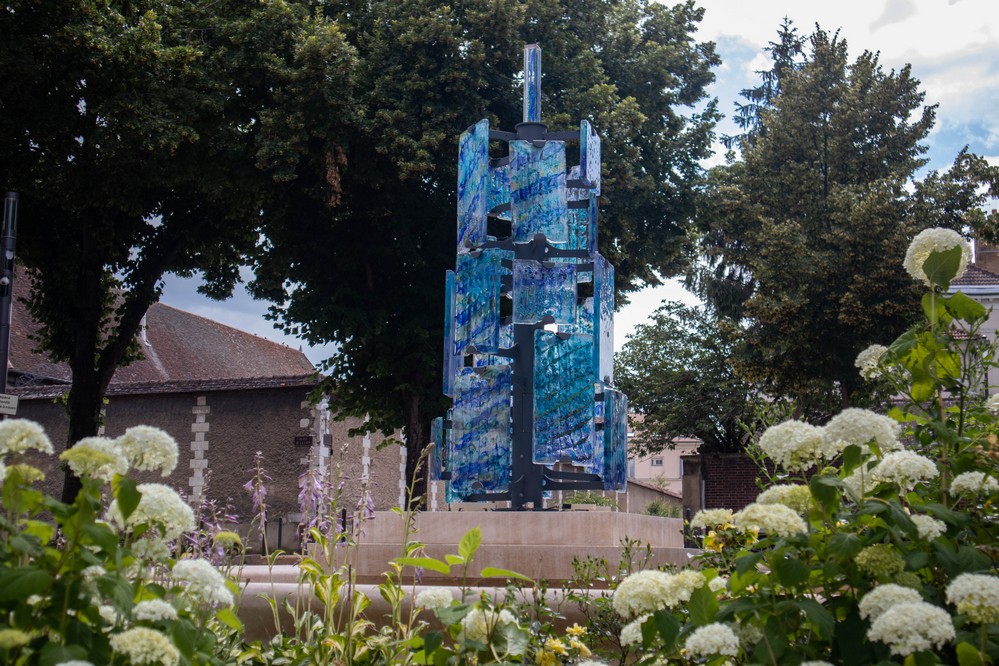
In addition to the gargoyles and chimeras featured on the Cathedral of Troyes, some of the decorative sculptures are true masterpieces. The sculptors have shown a wonderful imagination. Animal faces, half beasts, half humans, and other fantastic animals adorn every corner of the walls and the side aisles…
They were feeling free to represent anything from their imagination, and would even sometimes make more insolent sculptures, such as the libidinous Saint Anthony riding a pig…
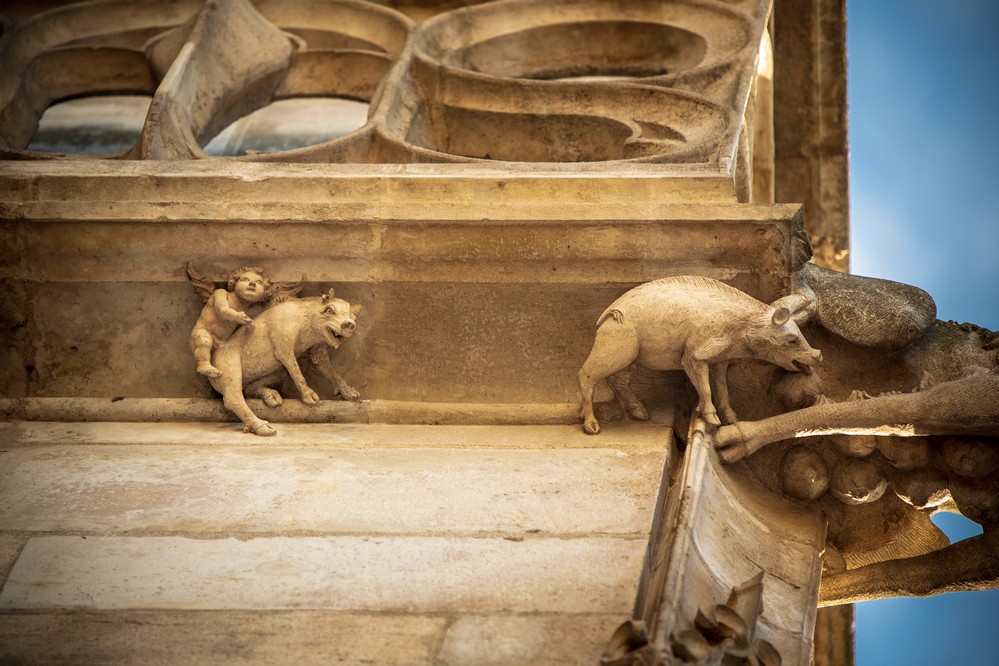
These sculptures represent a group of children with a penguin and a duck. Combining fantasy and humour, the Belgian artist Tom Frantzen, known for his creations on the border between reality and fantasy, is strongly influenced by Pieter Brueghel and Jérôme Bosch. This artwork is part of the new artistic path undertaken after the renovation of the quays of the Seine.
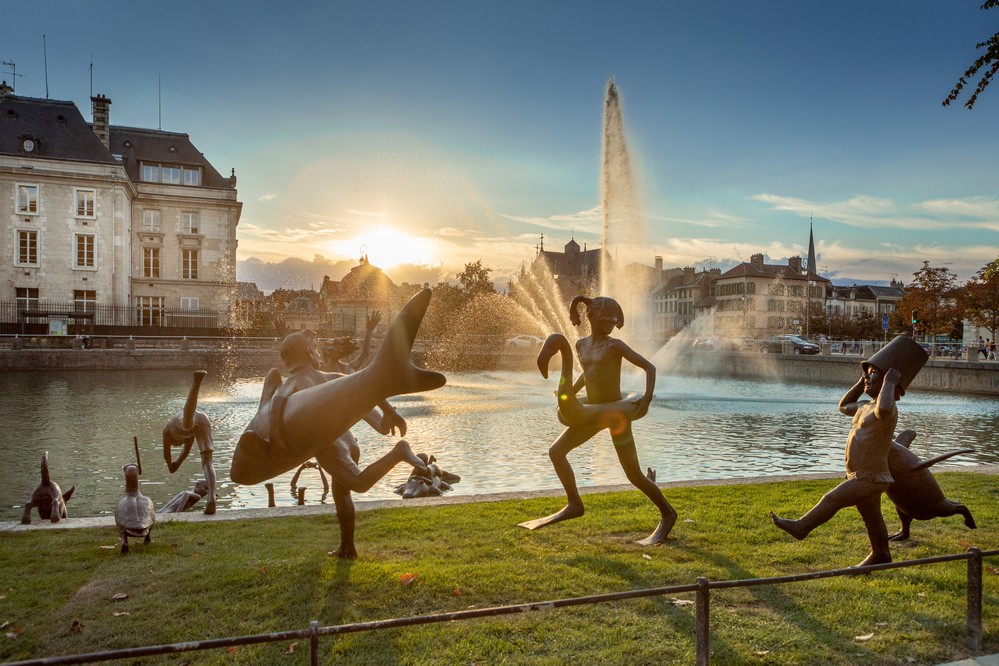
Also known as “Lili with a hat”, this sculpture was made by Andras Lapis, a Hungarian artist whose favourite theme seems to be ladies in hats. A similar statue can be found near the Hungarian Institute in Paris.
Our Lili from Troyes is sitting on a bench and reading a book about the Counts of Champagne. She is made of bronze and measure 1.25m. She has become an unavoidable stop for any photographer passing through Troyes.
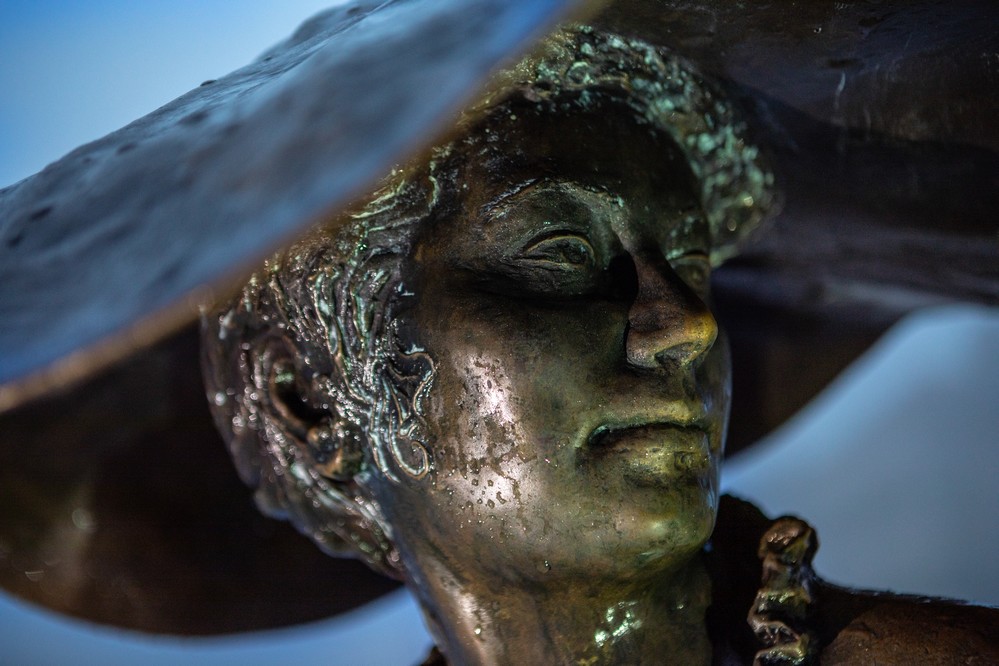
This sculpture is installed on the old swing bridge since the end of 2018. It is from the Belgian artist Tom Frantzen, the sculptor of the other artwork called “la Ribambelle Joyeuse” (the joyful group). This artist is well known for his creations on the border between the real world and the fantastic. This humorous and poetic sculpture represents a small dog that frightens a group of birds and causes them to fly away.
These birds remind us of the cranes that fly over the Aube department every year. The artist has worked in harmony with the site, so that the movement fits in and brings lightness to these heavy bronze sculptures.
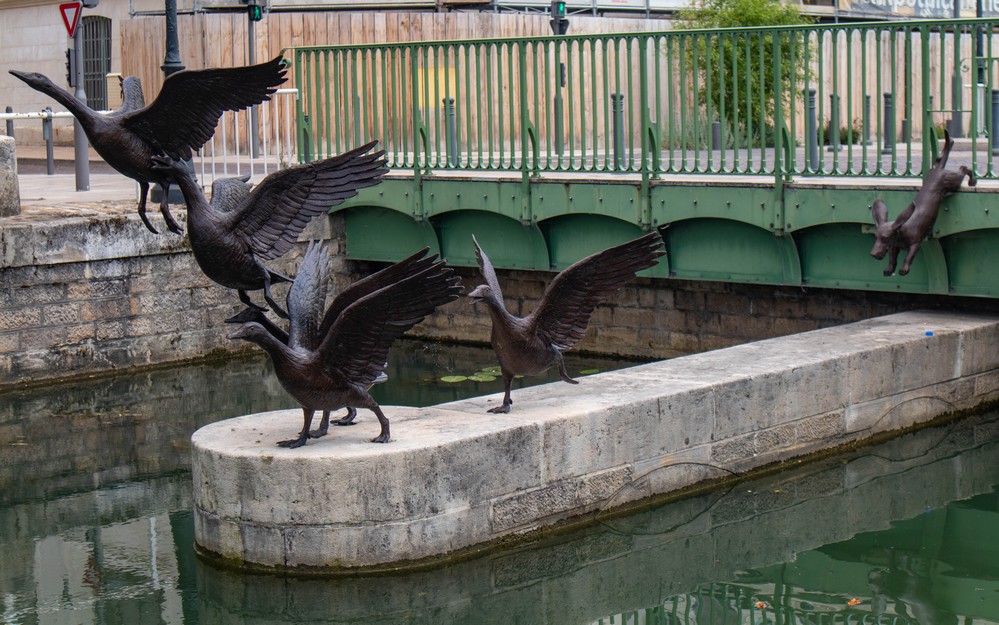
This sweet sculpture of 1.60 m, installed on the pavement by the swing bridge attendant’s house, was made by Sjer Jacobs, a Dutch sculptor born in 1963. It is an enlarged scale reproduction of one of his artworks in the city of Middelburg (Netherlands), called Sofia. What a beautiful invitation to kiss in our city known for its love courts in the time of the Countess Marie de Champagne and the courtly love novels of Chrétien de Troyes!
